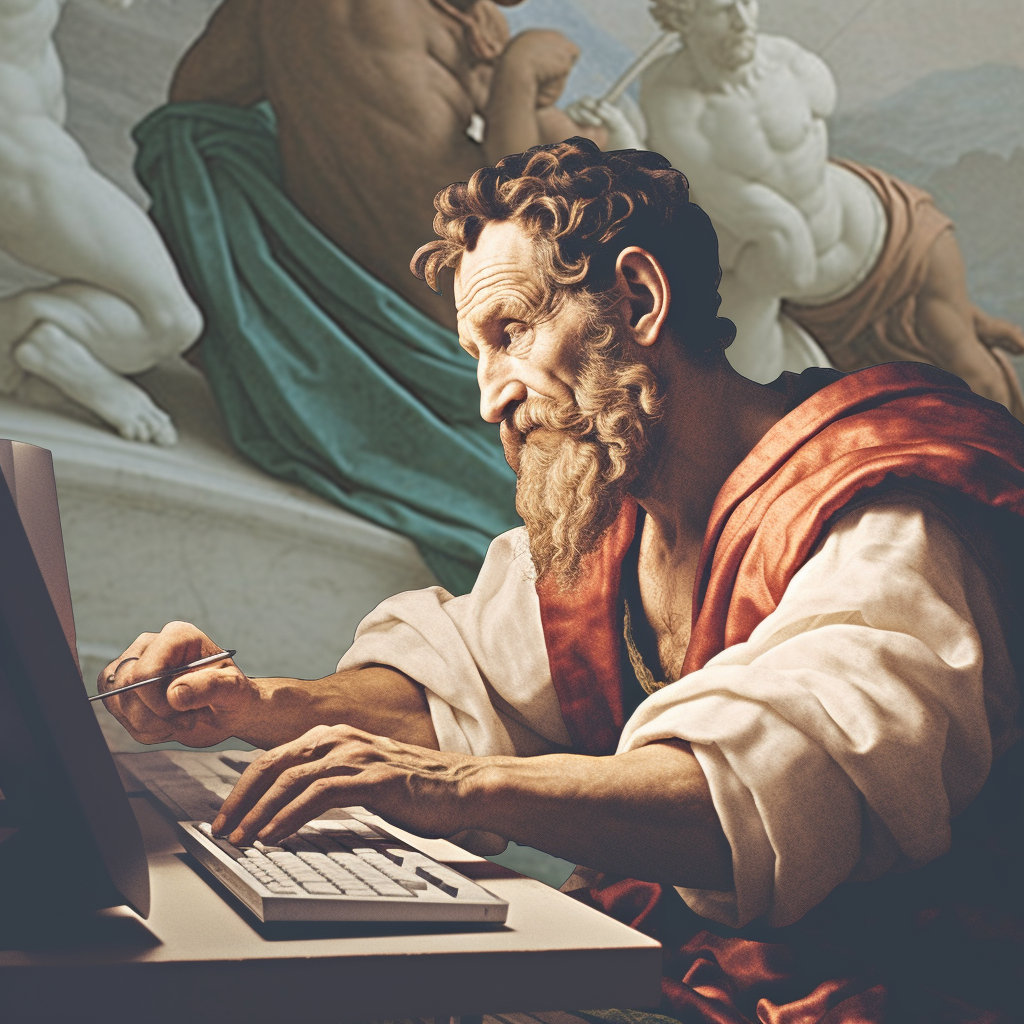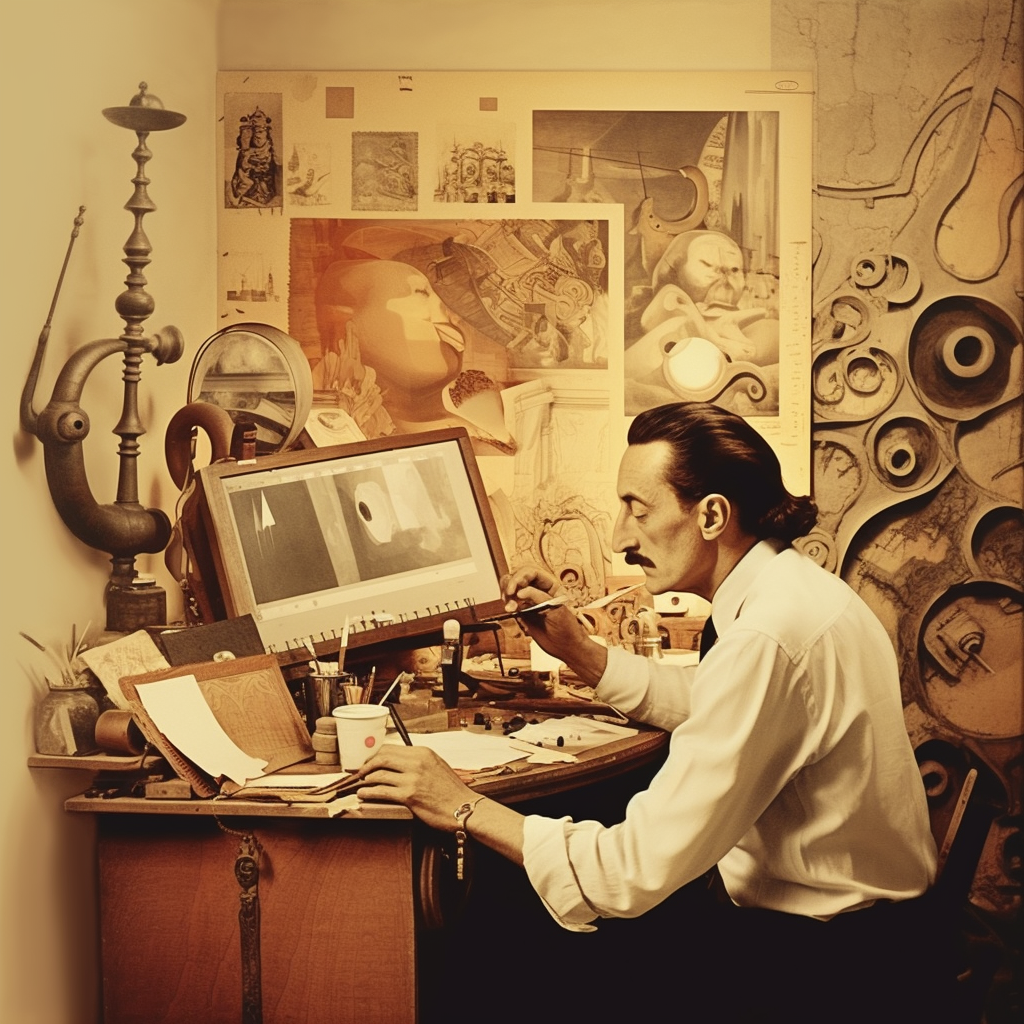Introduction
Web design, an art form in its own right, often draws inspiration from traditional art history. One artist whose influence permeates the sphere of modern web design is Michelangelo. This article will explore the ways in which the Renaissance master’s work has shaped modern web design.
Who was Michelangelo?
Brief Biography
Michelangelo di Lodovico Buonarroti Simoni, universally known as Michelangelo, was an Italian sculptor, painter, architect, and poet of the High Renaissance. His work had an unparalleled influence on the development of Western art.
Artistic Contributions
Michelangelo’s work includes masterpieces like the statue of David and the ceiling of the Sistine Chapel. His exceptional attention to detail, innovative use of perspective, and understanding of human anatomy revolutionized visual art.
Understanding Modern Web Design
Definition and Scope
Web design refers to the design of websites displayed on the internet. It encompasses several different aspects, including webpage layout, content production, and graphic design.
Importance in Today’s Digital World
In today’s digital age, a company’s website often serves as the first point of contact for potential customers. As such, effective web design is crucial for a positive user experience and successful online presence.
The Intersection of Art and Web Design
Art and web design intersect in many ways. Just as artists like Michelangelo sought to inspire emotion and convey complex ideas through their work, web designers aim to create an engaging, intuitive user experience through their designs.
Michelangelo’s Influence
Symmetry and Proportion
One of the key principles in Michelangelo’s work is the use of symmetry and proportion. Similarly, modern web designers use these principles to create balance, harmony, and ease of use in their designs.
Use of Color
Michelangelo’s use of color was groundbreaking. He used color not just for aesthetic appeal, but also to evoke emotion and highlight important elements of his artwork. This technique is mirrored in modern web design, where color is used to guide users’ attention and enhance their emotional response to the website.
Detail and Texture
Michelangelo’s attention to detail and texture added depth and realism to his work. In web design, similar techniques can be used to add visual interest and create a more immersive user experience.
Case Studies of Michelangelo’s Influence
Web Designs Inspired by The Sistine Chapel
Many modern websites use designs inspired by the Sistine Chapel, drawing from its intricate frescoes and use of color to create depth and realism. For example, some websites use a fresco-like backdrop, while others mimic the vibrant color palette of Michelangelo’s masterpiece to create an immersive visual experience.
Web Designs Inspired by David
Michelangelo’s David is another source of inspiration. Its balance and symmetry are echoed in web designs that emphasize grid-based layouts and harmonious arrangement of elements. Additionally, the sculpture’s meticulous detail resonates in designs that prioritize texture and depth, using shadows, gradients, and detailed icons or images.
Incorporating Michelangelo’s Techniques in Web Design
Achieving Balance and Harmony
Incorporating Michelangelo’s approach to symmetry and proportion can provide balance and harmony in web design. This might involve aligning elements symmetrically, using a grid system for layout, or achieving balance through the distribution of visual weight across the page.
Utilizing Color for Emotional Impact
Drawing from Michelangelo’s use of color can also enhance a website’s impact. Carefully selected color schemes can guide users’ attention, evoke specific emotions, or create a particular mood. For example, a calming blue might be used for a healthcare website, while an energetic red might be suited to a fitness brand.
Applying Detail for Visual Interest
Finally, Michelangelo’s meticulous attention to detail can inspire the use of texture and depth in web design. Techniques such as gradients, shadows, or detailed imagery can add visual interest and realism, enhancing the user’s engagement with the site.
Benefits of Art-Inspired Web Design
Enhancing User Experience
Art-inspired web design can significantly enhance user experience. By creating visually appealing, intuitive layouts, users are more likely to engage with the website and have a positive impression of the brand.
Standing Out from Competition
Artistic web design can also help a website stand out from the competition. Unique, art-inspired designs can leave a lasting impression on users, distinguishing the brand from others in the marketplace.
Challenges in Art-Inspired Web Design
While art-inspired web design has many benefits, it also presents challenges. It requires a careful balance of aesthetics and functionality, and must still adhere to key principles of web design such as usability and accessibility. Furthermore, it requires a deep understanding of both art history and modern design trends.
Conclusion
In conclusion, Michelangelo’s influence on modern web design is undeniable. His principles of symmetry, color, and detail are reflected in many websites today, offering a rich, engaging user experience. While the intersection of art and web design presents unique challenges, the resulting designs can set a brand apart and leave a lasting impression on users. By looking to the masters of the past, we can continue to push the boundaries of design in the digital age.
The Connection Between Sculpture and Web Design
Michelangelo’s sculptural works, such as David and the Pietà, demonstrate his exceptional ability to create realistic, three-dimensional forms. This skill can be applied to web design by incorporating elements that create an illusion of depth and dimension. Techniques such as parallax scrolling, layering, and the use of shadows or gradients can give a website a more dynamic, engaging appearance.
Storytelling in Web Design
Michelangelo was a master storyteller, using his art to convey powerful narratives that connected with viewers. Web designers can take inspiration from this approach by using visual elements and content to tell a brand’s story. This might involve using large, compelling images or videos, well-crafted typography, and engaging copy to create a cohesive narrative that resonates with users.
The Importance of Negative Space
In his works, Michelangelo often emphasized the importance of negative space—the empty areas around and between elements. This concept can be applied to web design by incorporating whitespace, allowing elements to breathe and creating a sense of balance and harmony. Thoughtful use of negative space can guide users’ attention, improve readability, and create a more visually appealing design.
Adapting to New Technologies and Techniques
Just as Michelangelo constantly adapted his style and techniques throughout his career, web designers must also be open to change and experimentation. The rapid evolution of technology and design trends requires designers to stay current and be willing to incorporate new ideas and approaches into their work. By embracing innovation, designers can create cutting-edge websites that captivate users and push the boundaries of design.
Collaboration in Art and Web Design
Michelangelo often collaborated with other artists, architects, and patrons during his career. Similarly, effective web design requires collaboration between designers, developers, content creators, and other stakeholders. By fostering a collaborative environment, web design teams can ensure that all aspects of a project come together cohesively, resulting in a high-quality final product.
Future Impacts of Art on Web Design
As we move forward, the influence of art on web design will likely continue to grow. New technologies, such as virtual reality and augmented reality, will further blur the lines between art and design, offering even more opportunities for creative expression and innovation. By continuing to learn from the masters like Michelangelo, web designers can create websites that not only meet the functional needs of users but also inspire and captivate them, leaving a lasting impression.
In summary, Michelangelo’s influence on modern web design is multifaceted, spanning concepts of balance and harmony, storytelling, negative space, adaptability, and collaboration. By incorporating these artistic principles into their work, web designers can create visually stunning, user-friendly websites that both serve their functional purpose and stand out in an increasingly competitive digital landscape. By embracing the rich history of art and its connection to design, we can continue to evolve and push the boundaries of what is possible in the digital realm.


